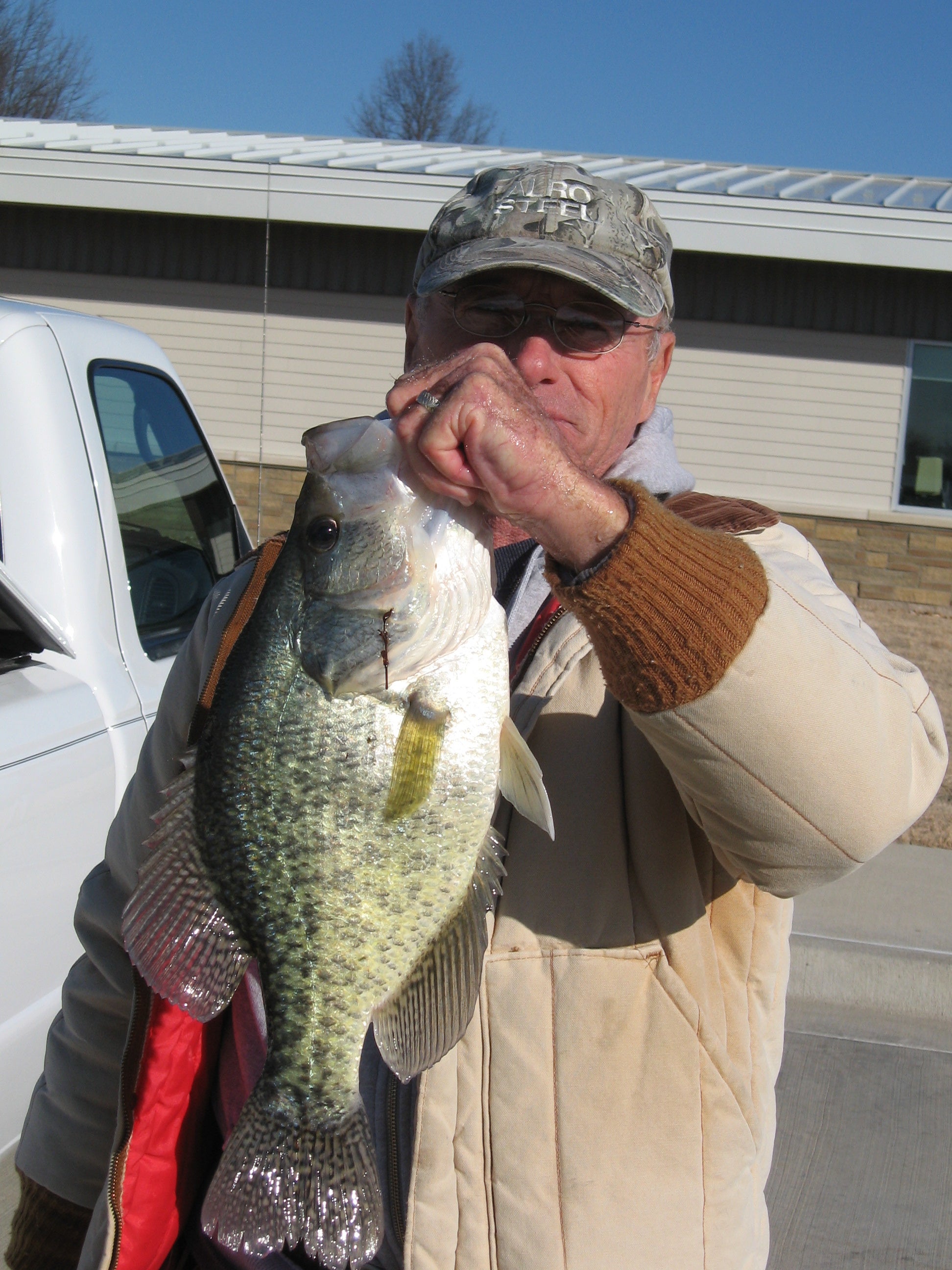
Xplor reconnects kids to nature and helps them find adventure in their own backyard. Free to residents of Missouri.


































Stay in Touch with MDC news, newsletters, events, and manage your subscription

Xplor reconnects kids to nature and helps them find adventure in their own backyard. Free to residents of Missouri.

A monthly publication about conservation in Missouri. Started in 1938, the printed magazine is free to residents of Missouri.


Lee’s Summit, Mo. – Two trophy crappie topping three pounds were nice, but angler Lindsay Cundiff believes more big ones swim in the same waters. Cundiff caught the two whopper crappie in early February from lakes at the Missouri Department of Conservation's (MDC) James A. Reed Memorial Wildlife Area.
This April, he’s back on the banks casting jigs and hoping for another lunker crappie.
“I plan on seeing if I can catch some more,” said Cundiff, of Lee’s Summit. “A friend of mine caught one this week that measured 13 inches, so there are some big ones out here,” he said on April 5.
Cundiff declined to reveal exactly which lake he was fishing at when he caught the two big ones. The Reed Area has 11 fishable lakes and ponds, and the largest two lakes are each 42 acres. But he will say he was using a 1/32-ounce, black and chartreuse tube jig with a white head floating under a bobber. He cast the rig to near a tree in a cove.
“I caught the first big one on a Monday on one side of the tree,” Cundiff said, “and I caught the other fish on a Wednesday on the other side of the tree.”
Both fish were taken to the MDC Kansas City Regional Office at the Reed Area. MDC Fisheries Biologist Bob Mattucks measured both fish at 16.7 inches. One weighed 3.15 pounds, the other weighed 3.10 pounds. Scales from the fish were checked to measure age, and both fish were six years old.
Three-pound crappie are an uncommon catch, as not many reach that size and wind up being caught by an angler.
“For somebody to catch a couple that big in a small lake, that is unusual,” Mattucks said.
The Reed Area lakes have produced big early season crappie before. In 2011, two anglers braved a snowy day in late February to try out some home-tied jigs. They caught crappie, including one topping three pounds and another topping two pounds. Both anglers were surprised that urban lakes that get steady fishing pressure in summer could produce such big crappie.
Good management of fish habitat produces good fishing. In late winter, some luck with weather patterns can lead to big fish.
Lakes at the Reed Area have been renovated to boost fishing, Mattucks said. Submerged humps were created as extra spawning areas. Brush placed in the lake provides habitat for sport fish and the smaller bait fish they feed on. Some fish find all the shelter and food they need away from angling pressure, and that lets them grow into lunkers.
However, in late winter, some shallow areas, especially those with brush, will warm up quicker than the deep water. In small lakes, this often attracts fish into shallow areas, Mattucks said. That includes lunkers.
“Even a difference of a degree or so can matter, as the fish like the warmer water and that’s where the food is,” he said.
As more water warms during early spring, fish will disperse back out into deeper waters. However, when water temperatures rise in late spring, the fish will move back into shallow areas to spawn. Summer warm ups will find them seeking the cooler, deeper water.
Crappie populations tend of vary in the lakes at the Reed area, Mattucks said. Anglers catch fewer crappie in some lakes but those caught can be large, while other lakes produce good numbers of crappie but few lunkers. The lakes that tend to produce the bigger fish include Jackrabbit, Bodarc and Cottontail. Lakes with good numbers include Gopher, Catclaw and Nell.
For more information about fishing at the Reed Area, go to www.on.mo.gov/XtRJGy.